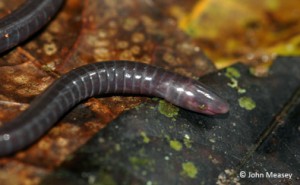
In Kenya, the Sagalla Caecilian Conservation Project is carrying out habitat rehabilitation through planting of indigenous trees and vetiva grass in Sagalla Hill forest, to reduce soil erosion and increase soil fertility to improve the habitat quality for the Sagalla caecilian (Boulengerula niedeni).
The project is also working with locals to help them create livelihoods through sustainable fishing, banana cultivation, and on-site forestry. In December last year, the project had planted 1,200 indigenous seedlings in an area of non-native forest, and identified two sites for fish farming, much to the great interest of the community. James Mwang’ombe, the project manager, explains what has happened since then…
At the end of April 2012, the project had nearly finished the construction of two fishponds, and was making tree nursery preparations. Some tree seedlings were earmarked for planting during the rainy season and on World Environmental Day on 5th June. These are native species, so they help restoration of the indigenous forest cover and thus increase potential habitat for the Sagalla caecilian, also coinciding with Kenya’s aim of achieving 10% national tree cover as part of their Vision 2030 goals. The project encouraged all people to get involved by planting the number of trees equivalent to their age. The first quarterly meeting for the Sagalla Community Forest Conservation Association was held on 14th April 2012, during which two new officials were elected to the executive committee, which contains members from all the corners of Sagalla forest.
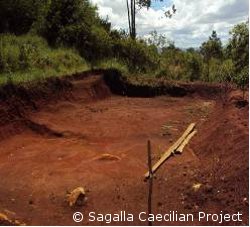
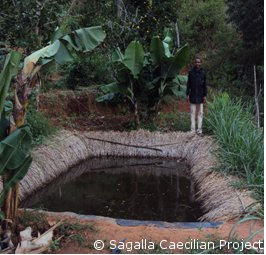
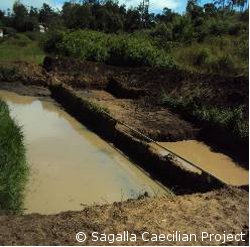
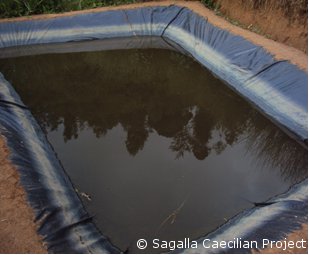
A month later, after a major boost from the Ministry of Youth Affairs, several youths helped plant over 5,000 Croton and Grevillea tree seedlings on five sites of water catchment areas. The fish farming enterprise has gained momentum as some farmers have already excavated fishponds within their compounds and stocked them with young fish, expecting to be able to harvest these within the next three months, which is incredibly encouraging. On the 29th of May, the first in a weekly series of interactive radio sessions was aired on Mwanedu FM, targeted at environmental conservation with a special focus on the greater Sagalla Hill landscape and the Sagalla caecilian showing how the project will help local communities. Various local schools in the area have ‘eco-clubs’ which will continue to be active via raising awareness about Sagalla Hill.

At the time of writing this blog, the project is still making preparations for World Environment Day on the 5th June. Several stakeholders have been mobilized to plant trees, including schools (planting in their compounds) and also the villagers to plant on their farms.
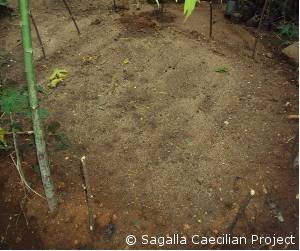
Throughout June, the project plans to start mapping the range of the Sagalla caecilian populations, which will involve local research assistants who took part in earlier work on the project. The aim of this research is to identify the areas of abundance and also ranges of occurrence that would help in focussing and informing conservation actions, as well as active monitoring of existing caecilians.
If you want to find out more about the Sagalla Caecilian Conservation Project and how it started, click here, or read some of James’ past blogs …